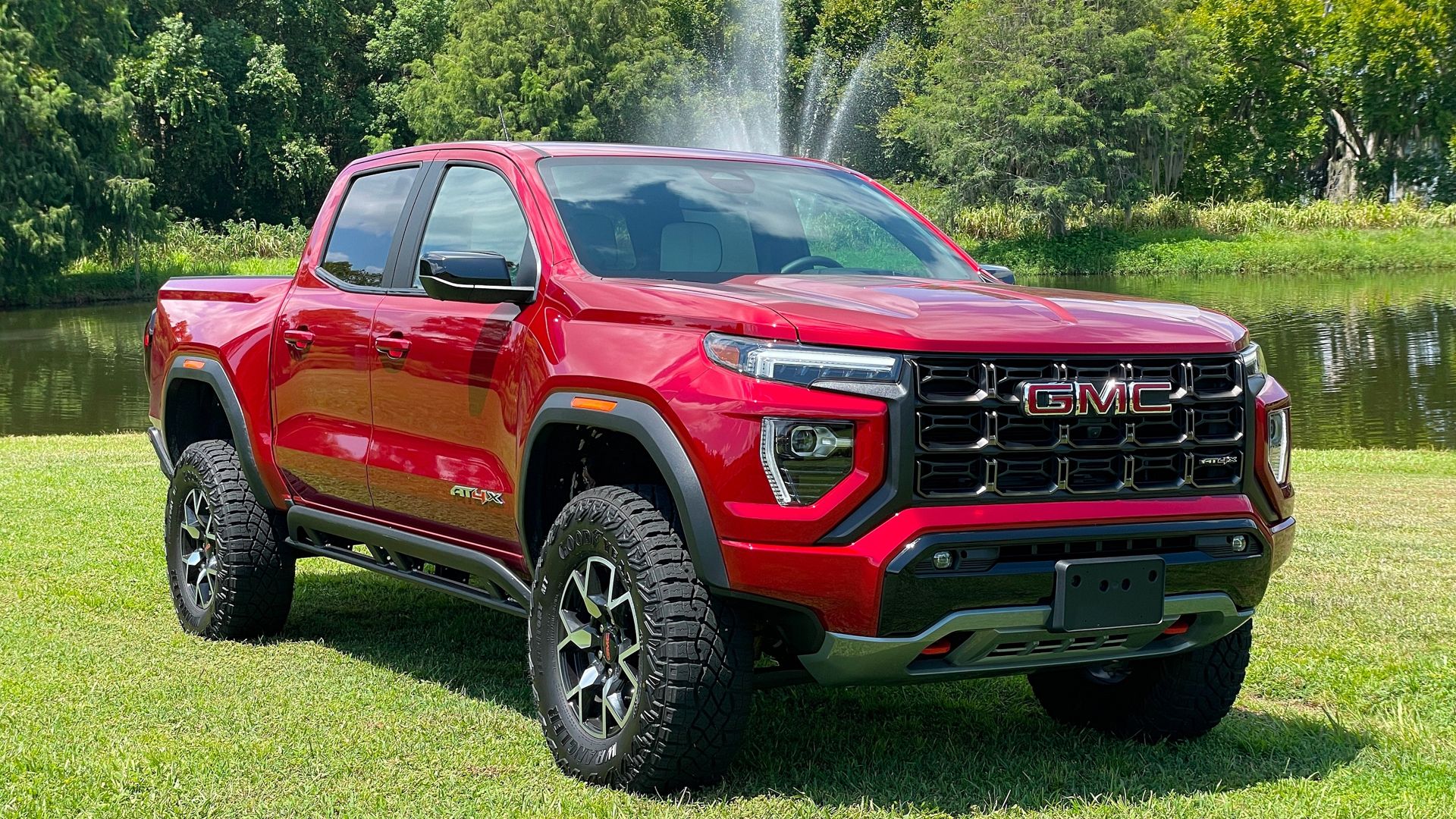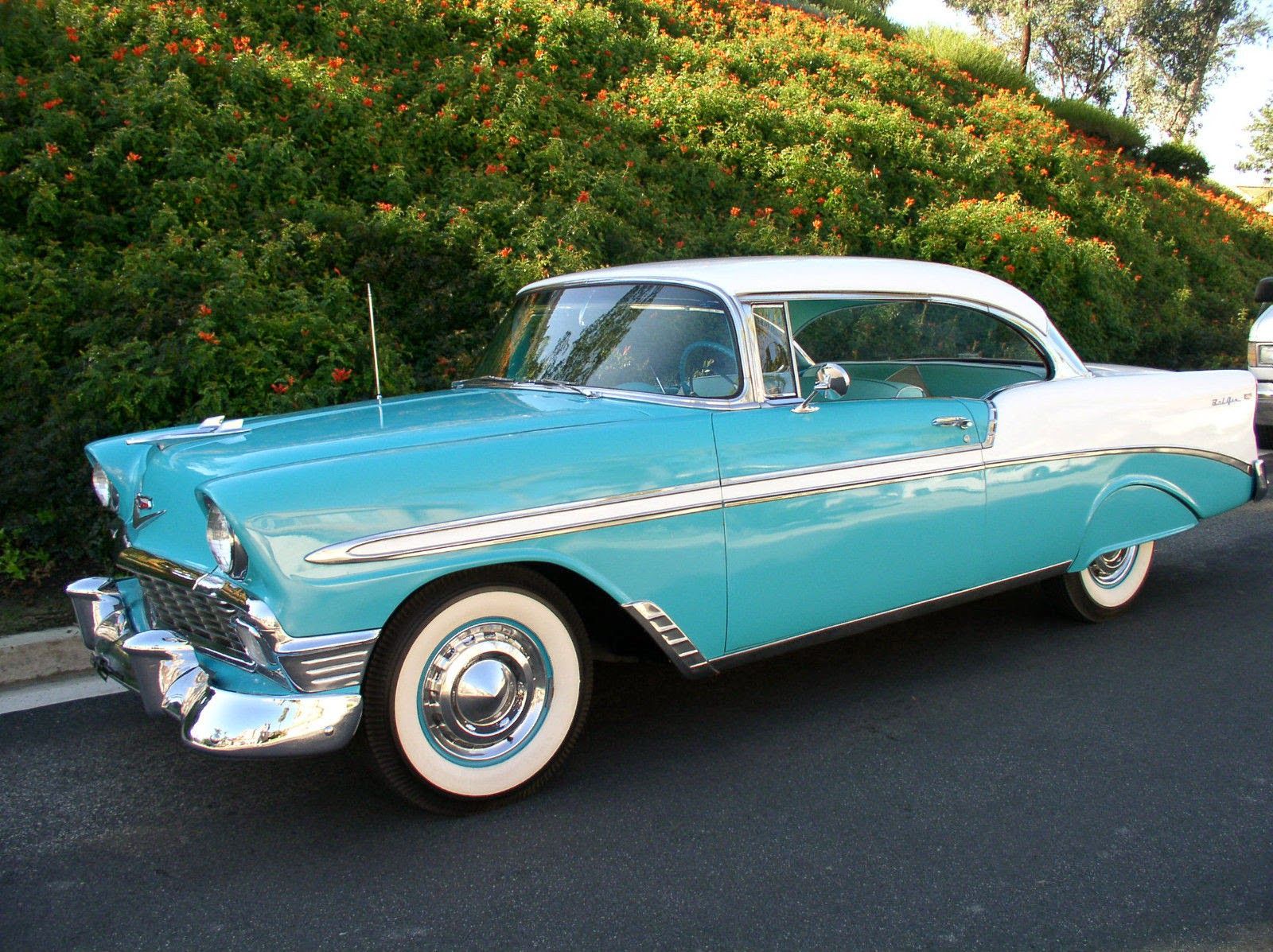Alright, gearheads, let’s talk about something truly magnificent: pure, unadulterated power. In a world increasingly obsessed with hybrid badges, electric charging stations, and the endless pursuit of the elusive MPG figure, there’s a special breed of machine that just… doesn’t care. These are the titans, the unapologetic fuel-swillers, the magnificent mechanical middle fingers to anything resembling an EPA rating. They’re not just ‘bad’ at fuel economy; they’re the absolute *worst* in the most glorious, tire-shredding, wallet-emptying way imaginable. We’re not talking about your slightly inefficient daily driver here; we’re talking about vehicles engineered with one simple, unshakeable philosophy: performance at any cost, especially the cost of premium unleaded. This is a celebration of excess, a deep dive into the kind of automotive audacity that prioritizes visceral thrills over every single drop of fuel efficiency.
Forget your efficiency metrics and your carbon footprints for a moment. Today, we’re celebrating the sheer audacity of engineering that prioritizes raw horsepower, ear-splitting exhaust notes, and neck-snapping acceleration over any quaint notion of MPG. These are the beasts that laugh in the face of fuel stops, knowing full well that their drivers are just as addicted to the thrill as the cars are to gasoline. When it comes to leaving a permanent dent in your wallet and the ozone layer, these ten machines don’t just participate; they dominate. They embody a certain defiance, a mechanical swagger that says, ‘I exist to thrill, not to conserve.’
So, buckle up, because we’re about to embark on a no-holds-barred tour of the automotive world’s most notorious gas guzzlers, the ‘muscle cars’ and high-performance aberrations that redefine what it means to be truly thirsty. These aren’t just *worse* than their economical counterparts; they are the undisputed *worst* when it comes to sipping fuel. We’re talking about the kind of thirst that makes a desert look like a water park, an unquenchable desire for fossil fuels that powers dreams and incinerates budgets. Get ready for a dose of pure, unadulterated automotive excess, presented with the unfiltered enthusiasm only a true car nut can appreciate.

1. Lamborghini Aventador
When you think of a Lamborghini Aventador, ‘fuel economy’ isn’t just an afterthought; it’s a concept that probably never even made it to the drawing board. This isn’t a car you buy to save money or the planet; it’s a screaming, fire-breathing declaration that you own the road, damn the consequences. The context states it’s packing a ‘monstrous 6.5-liter V12 engine,’ which alone tells you everything about its priorities. This is twelve cylinders of pure, unadulterated fury, built for high revs and maximum drama.
That V12 doesn’t just purr; it unleashes an auditory assault, propelling the car forward with ferocity that pins you back. It’s a symphony of mechanical madness, a highly strung, naturally aspirated marvel that demands to be fed copious amounts of high-octane nectar. The Aventador’s existence is a testament to engines designed for pure passion and raw emotional appeal, not efficiency certificates. Every press of the accelerator is a commitment, not just of speed, but of liquid gold flowing into those hungry cylinders, igniting a glorious cacophony.
And what’s the tangible result of all this excess? A truly eye-watering ‘9 MPG city rating.’ Let that sink in. Nine miles per gallon. The Aventador stands proudly, defiantly, as one of ‘the worst gas consumers in the exotic car world.’ It’s not just *worse* than a Prius; it’s so far off the charts it needs its own independent metric. This supercar’s primary focus is ‘raw power,’ delivering in spades, leaving a trail of fumes and empty pumps. It’s magnificent, brutal, and utterly unconcerned with your fuel budget. And frankly, that’s part of its charm.
Car Model Information: 2015 Lamborghini Aventador LP700-4
Name: Lamborghini Aventador
Caption: Lamborghini Aventador Ultimae Roadster
Manufacturer: Lamborghini
Production: February 2011 – September 2022
Assembly: Sant’Agata Bolognese
Designer: unbulleted list
Class: Sports car
BodyStyle: unbulleted list
Related: unbulleted list
Layout: Mid-engine, four-wheel drive layout
Engine: Lamborghini V12#Second Generation,V12 engine
Powerout: unbulleted list
Abbr: on
Order: flip SVJ LP 770-4 (with fluids, US)
Round: 5 (Aventador Ultimae)
Transmission: Graziano Trasmissioni
Wheelbase: 2700 mm
Length: 4780 mm
Width: 2030 mm
Height: 1136 mm
Weight: unbulleted list
Predecessor: Lamborghini Murciélago
Successor: Lamborghini Revuelto
ModelYears: 2012–2022
Doors: Scissor doors
Categories: 2020s cars, All Wikipedia articles written in British English, All articles with a promotional tone, All articles with unsourced statements, Articles with a promotional tone from January 2023
Summary: The Lamborghini Aventador (Spanish pronunciation: [aβentaˈðoɾ]) is a mid-engine, two-passenger sports car manufactured and marketed by Lamborghini from 2011 until 2022. Named after a prominent Spanish fighting bull that fought in Zaragoza, Aragón, in 1993, the Aventador succeeded the Murciélago and was manufactured in Sant’Agata Bolognese, Italy.
Get more information about: Lamborghini Aventador
Buying a high-performing used car >>>
Brand: Lamborghini Model: Aventador
Price: $339,000 Mileage: 25,545 mi.
Read more about: Beyond the Blockbuster: A Deep Dive into Dwayne ‘The Rock’ Johnson’s Multi-Million Dollar Car Collection
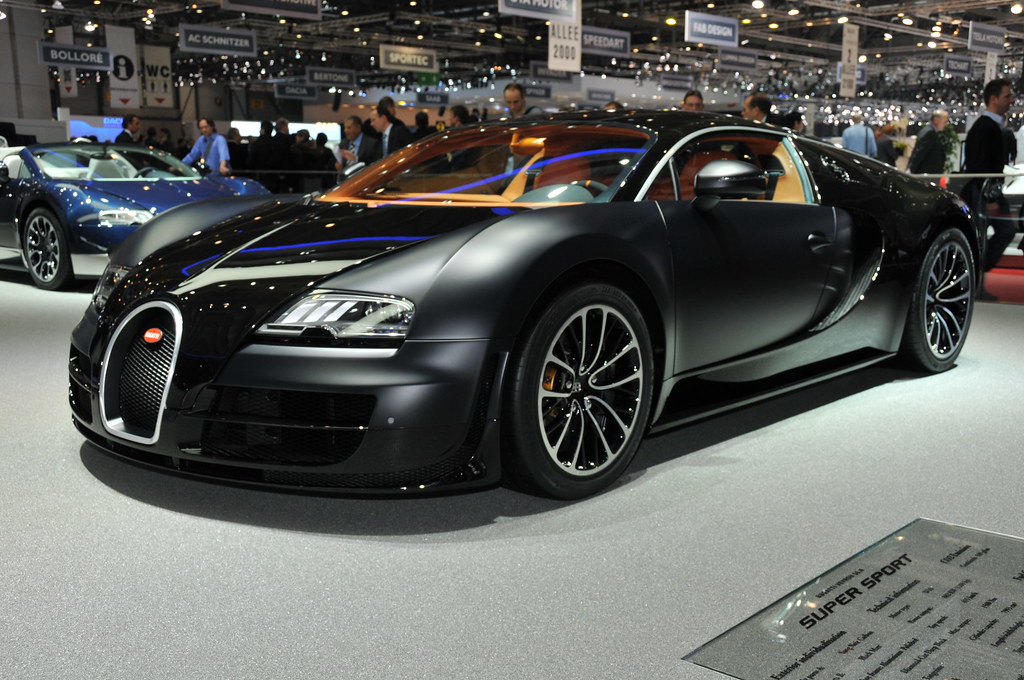
2. Bugatti Veyron
If the Lamborghini Aventador is an exercise in glorious excess, then the Bugatti Veyron is an entire masterclass in pushing boundaries, both in speed and in fuel consumption. This isn’t just a car; it’s an engineering marvel, a sculpture designed to be the fastest production car. To achieve that stratospheric performance, you simply cannot be bothered with trivialities like ‘fuel efficiency.’ The Veyron laughs at such mundane concerns, gorging itself on gasoline like it’s going out of style.
The heart of this beast, as the context so eloquently puts it, is an ‘8.0-liter W16 quad-turbocharged engine.’ Just read that again: W16. Quad-turbocharged. That’s sixteen cylinders, force-fed by four turbos, working in concert to create mind-bending horsepower. This isn’t just an engine; it’s a power plant, capable of generating speeds that defy belief, blurring lines between automotive and aerospace engineering. Every component is designed for ‘record-breaking speed,’ making fuel economy utterly irrelevant to its existence.
Naturally, all that unparalleled power comes ‘at a steep cost,’ not just the multi-million-dollar price tag. We’re talking about a ‘fuel efficiency rating of 8 MPG city.’ Eight! The Aventador looked thirsty, but the Veyron plunges further into inefficiency, securing its place at the top—or bottom—of the gas-guzzling hierarchy. It’s the ultimate ‘performance-first design, with little regard for fuel efficiency.’ Driving a Veyron means you’re buying a personal fuel refinery. It’s a statement of ultimate automotive supremacy, where environmental impact is simply part of its incredible, glorious, and undeniably *worst* vehicular gluttony.
Read more about: 14 Celebrity Cars That Are So Extravagant, They Scream “Too Much Money!”

3. Chevrolet Camaro ZL1 (Manual)
Now, let’s pivot from stratospheric exotics, where million-dollar price tags are common, and plant our feet firmly on American soil. Here, the concept of ‘muscle car’ has been refined and exaggerated for generations. Enter the Chevrolet Camaro ZL1, especially with a manual transmission. This isn’t a subtle machine; it’s a sledgehammer wrapped in an aggressive body, built for one purpose: to go fast, make glorious noise, and consume fuel with a gusto only true muscle cars muster. It’s a beast demanding your full attention and full fuel budget.
While the context doesn’t detail the specific engine or MPG for the ZL1, its name conjures images of raw, supercharged V8 power. The ZL1 moniker in the storied Camaro lineage has always signified the pinnacle of factory performance, a no-compromise approach to track capability and street dominance. You don’t get that visceral aggression, tire-shredding torque, or blistering acceleration by sipping fuel. This car thrives on gasoline explosions, transforming them into brutal forward momentum with zero consideration for gas mileage. It’s engineered for thrills, not thrift.
Choosing the manual amplifies its purist, performance-oriented intent. It’s for drivers intimately connected with every shift, every glorious engine roar, and every fuel drop consumed in pursuit of speed. The Camaro ZL1 doesn’t pretend to be an eco-warrior; it’s a glorious dinosaur, an apex predator. Its thirst for fuel is as legendary as its horsepower figures. It’s a powerful, uncompromising machine, a stark reminder that the most visceral, grin-inducing driving experiences come with the *worst* possible fuel bill. For many, that’s a price worth paying.
Car Model Information: 2019 Dodge Charger GT
Name: Chevrolet Camaro
Manufacturer: Chevrolet
Production: 1966–2002,2009–2023
ModelYears: 1967–2002,2010–2024
Class: Pony car
BodyStyle: coupe,convertible
Platform: GM F platform,GM Zeta platform,GM Alpha platform
Layout: Front-engine, rear-wheel-drive layout
Categories: 1970s cars, 1980s cars, 1990s cars, 2+2 coupés, 2000s cars
Summary: The Chevrolet Camaro is a mid-size American automobile manufactured by Chevrolet, classified as a pony car. It first went on sale on September 29, 1966, for the 1967 model year and was designed to compete with the Ford Mustang. The Camaro shared its platform and major components with the Firebird, produced by General Motors’ Pontiac division that was also introduced for the 1967 model year.
Four distinct generations of the Camaro were developed before production ended in 2002. The nameplate was revived on a concept car that evolved into the fifth-generation Camaro; production started on March 16, 2009.
Production of the sixth generation of the Camaro ended in December 2023, for the 2024 model year.
Get more information about: Chevrolet Camaro
Buying a high-performing used car >>>
Brand: Chevrolet Model: Camaro ZL1
Price: $14,990 Mileage: 116,956 mi.
Read more about: Fueling Your Wallet’s Misery: These 14 Rides Have Terrible MPG, and Owners Despise the Pump Life
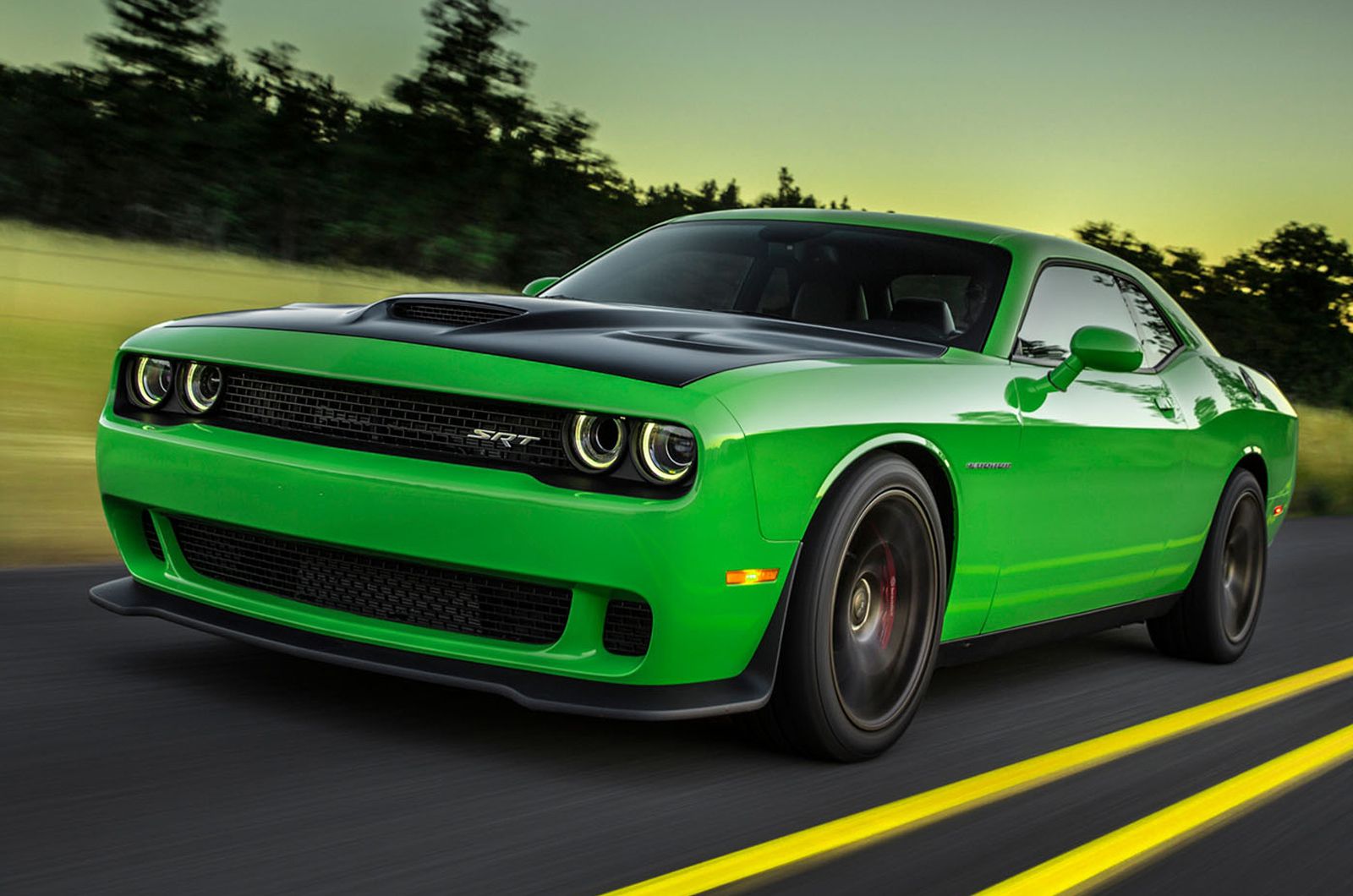
4. Dodge Charger Hellcat
Speaking of iconic American muscle, it’s impossible to ignore the modern legend that is the Dodge Charger Hellcat. If the Camaro ZL1 is a precision sledgehammer, the Hellcat is a full-blown wrecking ball—a four-door sedan that decided it didn’t want to be sensible or understated. This isn’t just a car you drive; it’s an experience, a raw, untamed beast demanding respect, a heavy foot, and an even heavier wallet for refills. It’s a rolling, roaring testament to excess.
The name ‘Hellcat’ itself is a declaration of war on moderation and subtlety. While specific engine details aren’t in our context, its mere mention tells us everything. This car is built around an engine producing insane, mind-boggling horsepower, pushing the boundaries of what a family sedan could be. Such prodigious power isn’t achieved through witchcraft; it’s by burning a monumental amount of fuel, converting it into a symphony of supercharger whine, exhaust thunder, and gloriously billowing tire smoke.
The Charger Hellcat isn’t just a gas guzzler; it’s a statement about engineers given free rein to create the most audacious sedan imaginable, with fuel economy as a forgotten consideration. It’s loud, brash, and makes no apologies for its insatiable appetite. For those craving monstrous power in a practical-ish package—it has four doors!—the Hellcat delivers. But be prepared for frequent, costly pump visits, an undeniable testament to its position among the *worst* offenders in fuel consumption. It’s a performance bargain, but a fuel economy nightmare by any measure.
Car Model Information: 2022 Dodge Charger R/T Scat Pack
Name: Dodge Charger
Caption: 1969 Dodge Charger
Manufacturer: Dodge
Production: 1966–1978,1981–1987,2005–present
ModelYears: 1966–1978,1982–1987,2006–present
Categories: 1960s cars, 1970s cars, 1980s cars, 2000s cars, 2010s cars
Summary: The Dodge Charger is a model of automobile marketed by Dodge in various forms over eight generations since 1966.
The first Charger was a show car in 1964. A 1965 Charger II concept car resembled the 1966 production version.
In the United States, the Charger nameplate has been used on mid-size cars, personal luxury coupes, subcompact hatchbacks, and full-size sedans.
Get more information about: Dodge Charger
Buying a high-performing used car >>>
Brand: Dodge Model: Charger
Price: $51,990 Mileage: 33,302 mi.
Read more about: So You Rolled Up in That Rare Muscle Car? Here’s What Your Car Wash Attendant *Actually* Thinks (And How to Earn Their Respect)
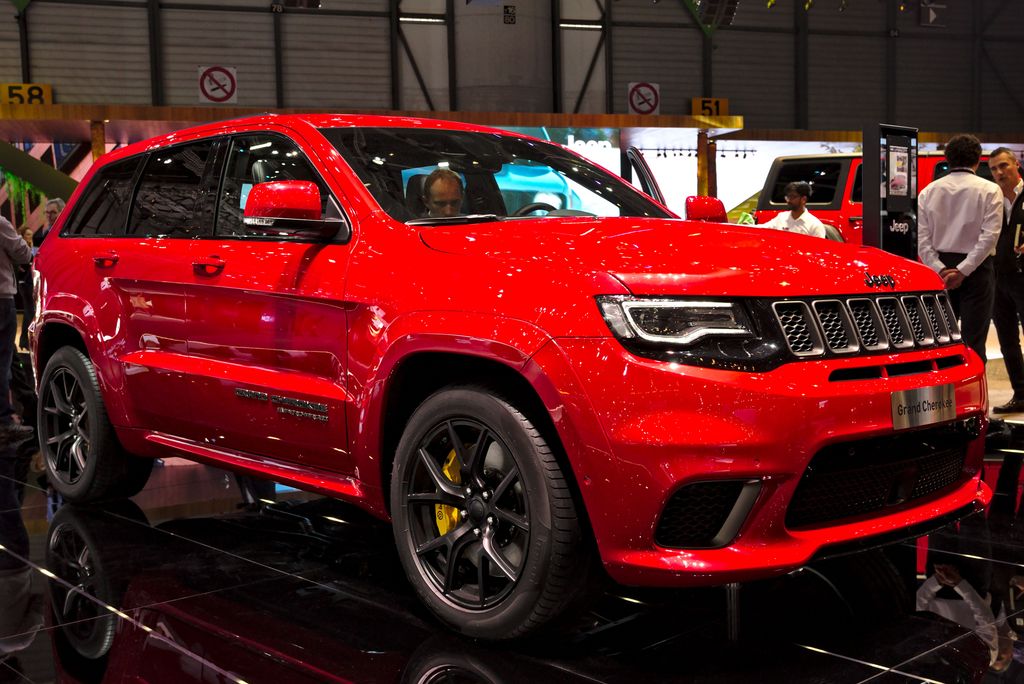
5. Jeep Grand Cherokee Trackhawk
And now, for something a little different, yet undeniably part of the gas-guzzling, performance-obsessed family on this list: the Jeep Grand Cherokee Trackhawk. What happens when you take a capable SUV and inject it with the heart and soul of a bona fide muscle car? You get a vehicle that blurs lines, defies expectations, and drinks gasoline like it’s going out of style. This isn’t your average grocery-getter; this is an SUV that thinks it’s a drag car, and it has the staggering performance—and corresponding abysmal fuel economy—to prove it.
The ‘Trackhawk’ designation is absolutely key. It signifies a no-compromise performance variant, elevating the Grand Cherokee from a family hauler to a pavement-pounding, absurdly fast machine that can embarrass many sports cars. While specific engine details aren’t explicitly laid out for this model, its inclusion on a list of ‘worst gas guzzling cars’ speaks volumes. It’s undoubtedly powered by a formidable V8, almost certainly supercharged, designed to deliver breathtaking acceleration and terrifying top speed for its size. With such prodigious power comes truly terrible, unrepentant fuel efficiency.
This is an SUV for those who need utility but refuse to sacrifice raw, earth-shaking horsepower, even if it means frequent, expensive trips to the pump. The Trackhawk is a unique proposition, blending practicality and outright, unhinged speed few vehicles match. It’s a testament to the idea that pushing SUV performance boundaries means paying the price in fuel. It’s a glorious, overpowered monster, representing one of the *worst* examples of fuel efficiency in an SUV, an almost comical disregard for economy in favor of pure, exhilarating grunt. It’s a beast that revels in its thirst, and we love it for it.
Alright, if you thought muscle cars and exotics were the only ones capable of emptying a gas station, allow us to introduce you to the true titans of utility that also happen to be magnificent fuel hogs. We’re continuing our journey into the magnificent, glorious, and undeniably *worst* gas guzzlers, exploring those domestic powerhouses, off-road legends, and high-performance SUVs that refuse to compromise on anything but efficiency.
Car Model Information: 2023 Lincoln Navigator Black Label
Name: Fourth-generation Jeep Grand Cherokee (WK2)
Production: May 2010–2022
Aka: Jeep Grand Cherokee WK (2022)
ModelYears: 2011–2022
Manufacturer: Jeep
Class: Mid-size SUV
Designer: Mark Allen
Engine: ubl
Assembly: ubl
Transmission: 5G-Tronic
Layout: Front-engine, rear-wheel-drive
Wheelbase: 2915 mm
Abbr: on (V8 4WD)
Disp: flip
Length: 189.8 in
Width: 76.3 in
Height: 69.3 in
Weight: 4533 lb
Related: Dodge Durango#WD
Predecessor: Jeep Grand Cherokee (WK)
Successor: Jeep Grand Cherokee (WL)
Categories: 2010s cars, All-wheel-drive vehicles, All Wikipedia articles in need of updating, All articles that are excessively detailed, All articles with dead external links
Summary: The fourth-generation Jeep Grand Cherokee (WK2) is a mid-size SUV produced by the American marque Jeep from mid-2010 to 2022. It was introduced in 2010 for the 2011 model year by Jeep. The unveiling took place at the 2009 New York Auto Show, where it received 30 awards.
Get more information about: Jeep Grand Cherokee (WK2)
Buying a high-performing used car >>>
Brand: Jeep Model: Grand Cherokee Trackhawk
Price: $67,900 Mileage: 29,460 mi.
Read more about: Beyond the Showroom Shine: 15 New Cars Experts Warn You to Avoid in 2024 Due to Pervasive Reliability Concerns

6. Ford F-250 Super Duty (V8)
First up in our next batch of magnificent guzzlers is the Ford F-250 Super Duty with its mighty V8. This isn’t just a truck; it’s a portable job site, a towing behemoth, and an unyielding force designed to tackle the kind of tasks that would make lesser vehicles weep. And because it’s built to “tow and haul massive loads,” it demands an equally massive appetite for fuel.
The heart of this particular beast, as our context reveals, is a “6.7-liter Power Stroke V8.” Just the name “Power Stroke” evokes images of raw, untamed force, and rightly so. This isn’t an engine built for delicate commutes or eco-friendly errands. It’s engineered to pull mountains, carry enough lumber to build a small house, and generally scoff at the concept of a lightweight load. Every cylinder firing is a testament to torque and capability, a mechanical declaration that practicality, in this heavy-duty sense, means an uncompromised commitment to power output.
But that unrelenting capability comes with a very clear, very thirsty price tag at the pump. The F-250 Super Duty proudly boasts a “10 MPG city rating,” a figure that ensures it earns its place on this list with unwavering conviction. Ten miles per gallon in city driving is not just bad; it’s the kind of figure that makes you plan your routes around gas stations, not landmarks. It’s a truck that embodies the spirit of American industry, capable of incredible feats of strength, but entirely unconcerned with making friends at the fuel pump.
This truck represents a different flavor of fuel consumption. It’s not about blistering track times or breaking land speed records; it’s about brute force and getting the toughest jobs done, period. For the individual who needs this level of capability, the fuel bill is just another cost of doing business, a necessary evil for the sheer, unadulterated power and utility the F-250 provides. It’s a workhorse, yes, but one with an insatiable, glorious thirst for gasoline.
Car Model Information: 2023 Lincoln Navigator Black Label
Name: Ford Super Duty,(F-250/F-350/F-450/F-550/F-600)
Caption: 2020 Ford F-250
Manufacturer: Ford Motor Company
Production: January 5, 1998–present
ModelYears: 1999–present
Class: pickup truck
Layout: Front-engine, rear-wheel-drive layout
Predecessor: Ford F-Series (ninth generation)
Categories: 2000s cars, 2010s cars, All-wheel-drive vehicles, All articles with bare URLs for citations, Articles with bare URLs for citations from August 2024
Summary: The Ford Super Duty (also known as the Ford F-Series Super Duty) is a series of heavy-duty pickup trucks produced by the Ford Motor Company since the 1999 model year. Slotted above the consumer-oriented Ford F-150, the Super Duty trucks are an expansion of the Ford F-Series range, from F-250 to the F-600. The F-250 through F-450 are offered as pickup trucks, while the F-350 through F-600 are offered as chassis cabs.
Rather than adapting the lighter-duty F-150 truck for heavier use, Super Duty trucks have been designed as a dedicated variant of the Ford F-Series. The heavier-duty chassis components allow for heavier payloads and towing capabilities. With a GVWR over 8,500 lb (3,900 kg), Super Duty pickups are Class 2 and 3 trucks, while chassis-cab trucks are offered in Classes 3, 4, 5, and 6. The model line also offers Ford Power Stroke V8 diesel engines as an option.
Ford also offers a medium-duty version of the F-Series (F-650 and F-750), which is sometimes branded as the Super Duty, but is another chassis variant. The Super Duty pickup truck also served as the basis for the Ford Excursion full-sized SUV.
The Super Duty trucks and chassis-cabs are assembled at the Kentucky Truck Plant in Louisville, Kentucky, and at Ohio Assembly in Avon Lake, Ohio. Prior to 2016, medium-duty trucks were assembled in Mexico under the Blue Diamond Truck joint venture with Navistar International.
Get more information about: Ford Super Duty
Buying a high-performing used car >>>
Brand: Ford Model: F-250 Super Duty
Price: $67,900 Mileage: 29,460 mi.
Read more about: Fueling Your Wallet’s Misery: These 14 Rides Have Terrible MPG, and Owners Despise the Pump Life

7. Chevrolet Suburban 2500 (V8)
Continuing our tour of the truly gargantuan, let’s turn our attention to another American icon that redefines ‘big’ and ‘thirsty’: the Chevrolet Suburban 2500, packing a robust V8. This isn’t merely an SUV; it’s essentially a mobile command center, a family hauler capable of transporting a small army, and a master of towing. For generations, the Suburban has been synonymous with vast interior space, rugged reliability, and an unwavering commitment to getting people and things wherever they need to go, regardless of how much fuel that journey consumes.
Under the hood, our context specifies, lies a “6.0-liter V8 engine.” This isn’t a dainty powerplant; it’s a testament to traditional American V8 engineering, designed to move a substantial mass with authority. The Suburban 2500’s mission is clear: “prioritizes towing capacity and passenger space over fuel efficiency.” This V8 is all about low-end grunt, ensuring that whether you’re loaded with seven passengers and their luggage or hauling a substantial trailer, the Suburban simply shrugs and pushes forward. It’s about capability, not conservation, and that’s a philosophy we can appreciate in this context.
And what a magnificent thirst it has! With a city rating that barely edges out some of our exotic supercars, clocking in at “10 MPG c” (which we can confidently interpret as city), the Suburban 2500 unapologetically cements its position on this list. This isn’t just an inefficient vehicle; it’s a rolling monument to the idea that some things are too important to compromise on, like vast space and towing prowess. The fuel economy is what happens when you decide that every trip should feel like an expedition, and every passenger should have room to stretch out.
For those who live a life that demands a vehicle of this magnitude, the Suburban 2500 is an indispensable tool. It represents the pinnacle of traditional American utility, offering unparalleled interior volume and serious hauling capabilities. But just remember, that cavernous interior and mighty towing arm come at the expense of frequent, and increasingly expensive, trips to your friendly neighborhood gas station. It’s a magnificent beast, but one that is absolutely, gloriously among the *worst* when it comes to fuel sipping.
Read more about: Fueling Your Wallet’s Misery: These 14 Rides Have Terrible MPG, and Owners Despise the Pump Life
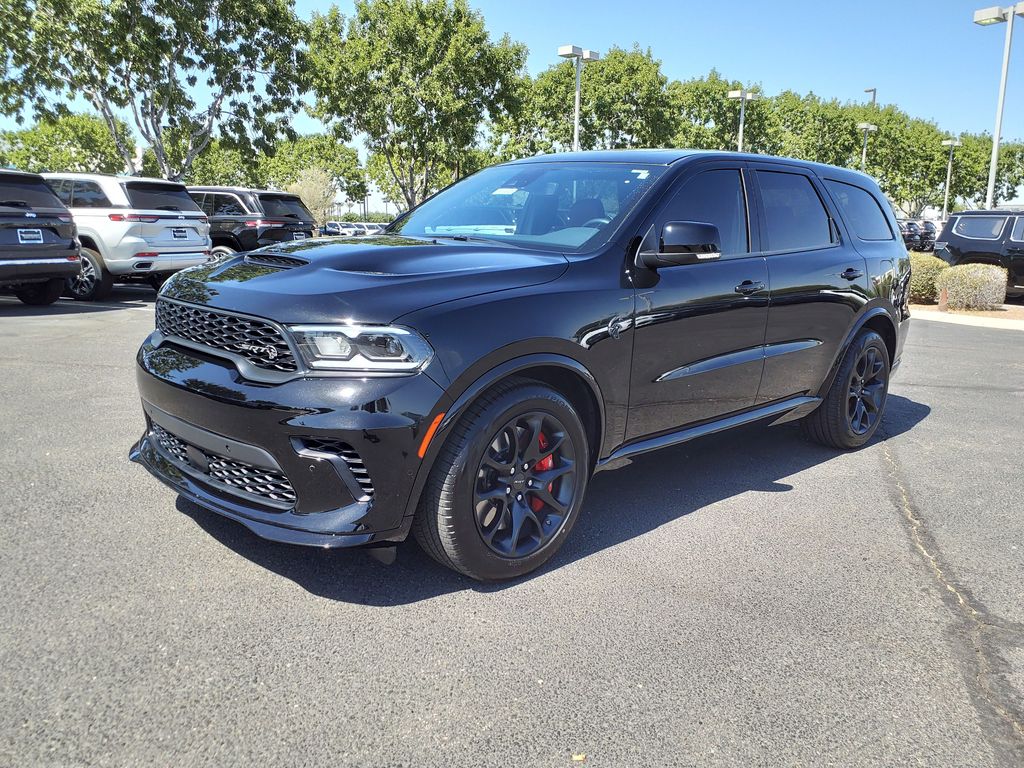
8. Dodge Durango SRT Hellcat
Now, let’s revisit the Hellcat philosophy, because if it works for a Charger, why not for an SUV? Behold, the Dodge Durango SRT Hellcat—a true domestic muscle SUV that takes the audacious “performance at any cost” mantra and applies it to a practical, family-friendly package. Well, “family-friendly” if your family appreciates being thrown back into their seats by monstrous acceleration and hearing the glorious whine of a supercharger on the way to soccer practice. This isn’t just an SUV; it’s an absolute rocket ship in an SUV costume.
The very name “Hellcat” attached to a Durango is a bold, almost defiant statement. It instantly signifies a lineage of unadulterated, supercharged V8 power designed for one thing: to dominate. While specific engine specs aren’t explicitly detailed for *this* model in our direct context, anyone familiar with the Hellcat stable knows it means earth-shattering horsepower, torque that can twist pavement, and a performance philosophy that completely disregards anything resembling fuel economy. This is an engine built to turn premium unleaded into pure, glorious speed.
Driving a Durango SRT Hellcat isn’t just about getting from point A to point B; it’s about the sheer spectacle of it. It’s the rumble at idle, the supercharger’s shriek as you accelerate, and the satisfying growl from the quad exhaust tips. This vehicle is a visceral experience designed to thrill, not to conserve. Its immense power and substantial weight combine to create an unquenchable thirst for fuel, ensuring it burns through gallons with the same ferocity it eats up pavement. It’s an engineering marvel for those who demand ultimate power and are willing to pay the price at the pump.
The Durango Hellcat is a unique entry in the automotive landscape, offering a blend of SUV practicality and supercar-beating performance. It defies categorization, refusing to be a sensible family hauler while also being too large to be a dedicated track monster. Instead, it carves out its own niche as a high-octane, unapologetically thirsty machine that proves you don’t have to sacrifice speed, even if it comes at the expense of being one of the *worst* when it comes to fuel efficiency. It’s glorious, ridiculous, and utterly brilliant.
Car Model Information: 2023 Lincoln Navigator Black Label
Name: Dodge Durango
Manufacturer: Dodge
Production: 1997–present
Class: Mid-size,SUV
Predecessor: Dodge Ramcharger,Dodge Town Panel and Town Wagon
Related: Dodge Dakota
Layout: Front-engine, rear-wheel-drive layout,automobile layout
Caption: Dodge Durango GT 2021
ModelYears: 1998–2009,2011–present
Categories: 2000s cars, 2010s cars, 2020s cars, All-wheel-drive vehicles, All accuracy disputes
Summary: The Dodge Durango is a mid-size SUV produced by Dodge starting with the 1998 model year. The first two generations were very similar in that both were based on the Dodge Dakota and Dodge Ram, both featured a body-on-frame construction and both were produced at the Newark Assembly Plant in Newark, Delaware through the 2009 model year.
The third-generation Durango began with the 2011 model year. It is built on the same platform as the Jeep Grand Cherokee, features unibody construction, and has been assembled at the Jefferson North Assembly Plant in Detroit, Michigan, since late 2010.
Each generation had options for different engine sizes and power ratings, with different transmissions also. In 2009 a hybrid variant was introduced, but ended quickly with the second generation Durango. From 2007 to 2009 the Durango was available as the Chrysler Aspen from Chrysler. Over two million Durangos have been sold since it was introduced in 1998.
Get more information about: Dodge Durango
Buying a high-performing used car >>>
Brand: Dodge Model: Durango SRT Hellcat
Price: $67,900 Mileage: 29,460 mi.
Read more about: Unpacking the Wallet Drain: The 12 Most Expensive SUVs to Maintain in Today’s Market for Savvy Long-Term Planners

9. Mercedes-Benz G-Class (G63 AMG)
Crossing the pond to Europe, we find that the commitment to glorious excess and fuel consumption is not exclusive to American muscle or Italian exotics. The Mercedes-Benz G-Class, particularly in its G63 AMG guise, is a prime example of a European high-performance SUV that laughs in the face of efficiency metrics. What started as a rugged, utilitarian off-roader has evolved into a luxury icon, then transformed into a brutal, fire-breathing performance machine, especially once AMG gets their hands on it. It’s a square peg in a round hole, but oh, what a gloriously powerful peg it is.
The AMG badge is a clear indicator that the G63 is far from your average sensible SUV. It means a hand-built, twin-turbocharged V8 engine—even if the specific displacement isn’t in our immediate context, the “AMG” and “G63” are shorthand for serious firepower. This engine is tuned for monstrous horsepower and torque, designed to propel a brick-shaped SUV with the kind of urgency usually reserved for sports cars. It’s about conquering every road, whether it’s a pristine highway or a challenging off-road trail, with an abundance of power and an even greater abundance of fuel consumption.
The G63 AMG perfectly embodies the “power and presence over any semblance of fuel economy” ethos mentioned in our outline. Its boxy aerodynamics (or lack thereof), heavy-duty construction, and intensely powerful engine combine to create an insatiable appetite for gasoline. It’s not just a status symbol; it’s a statement of mechanical might, a vehicle that demands attention and copious amounts of premium fuel. For those who want luxury, brutal performance, and an unshakeable sense of command, the G63 delivers, but never forgets to remind you of its thirst.
This magnificent, square-jawed beast stands out as an almost comical testament to the pursuit of extreme performance in an utterly impractical form factor. Yet, it works. The G63 AMG is a car of contradictions: an off-roader that rarely leaves the asphalt, a luxury vehicle that drives like a tank, and a performance SUV that drinks fuel like it’s going out of style. It secures its spot as one of the *worst* gas guzzlers with a swagger that only a true AMG product can pull off, making every fuel stop a necessary ritual for an unforgettable driving experience.
Read more about: Fueling Your Wallet’s Misery: These 14 Rides Have Terrible MPG, and Owners Despise the Pump Life

10. Hummer H1
Finally, we round out our magnificent, fuel-guzzling lineup with a vehicle that, in many ways, defined excess and unapologetic consumption for an entire generation: the Hummer H1. This isn’t just an off-roader; it’s a civilian version of a military vehicle, a veritable tank for the road that makes everything else look small and dainty. The H1 is less a car and more a rolling statement of absolute, uncompromised capability and an almost comical disregard for anything resembling a compact footprint or sensible fuel use.
Conceived from a military platform, the Hummer H1 was built to tackle the most extreme terrains on the planet, not to win any economy runs. Its immense size, heavy-duty components, and powertrain—typically a large-displacement diesel or gasoline V8, even if not specifically detailed in our provided context—are all geared towards ultimate durability and conquering obstacles. This is a vehicle designed to wade through rivers, climb impossible inclines, and withstand punishment, prioritizing brute strength and go-anywhere capability above all else. Its engineering brief likely didn’t even have a section for “MPG targets.”
And boy, does that military-grade capability translate into an epic thirst for fuel. The Hummer H1 is legendary for its abysmal fuel economy, often hovering in the single digits, making it not just a gas guzzler, but a gas *crater*. Every mile driven is a testament to its prodigious consumption, a glorious, smoky declaration that this vehicle exists outside the realm of ordinary automotive concerns. It’s a machine that demands attention, respect, and a very strong friendship with your local gas station attendant.
The H1 is a quintessential “off-road beast” that embraces its role as an outlier. It’s impractical for most urban environments, a challenge to park, and requires a dedicated fuel budget, but for those who value its unique blend of heritage, capability, and sheer presence, there’s nothing quite like it. It stands as an enduring symbol of a time when automotive design didn’t always have to apologize for its excesses. The Hummer H1 truly is one of the *worst* gas guzzlers ever, and for many, that’s precisely why it’s so incredibly compelling.
Car Model Information: 2002 Hummer H1 Enclosed
Name: Hummer H1
Manufacturer: AM General
Aka: Hummer HMC (1992–2002),HMMWV (HUMVee)
Production: 1992–2006 (11,818 produced)
ModelYears: 1992–2004 , 2006
Assembly: Mishawaka, Indiana
Class: Full-size,pickup truck
BodyStyle: 4-door Open Top – HMCO , 4-door SUV – HMCS , 4-door Hard Top – HMC4 , 2-door Fleet – KSC2 , 2-door Pickup – XLC2
Related: Humvee
Layout: Front-engine, four-wheel-drive layout,four-wheel drive
Engine: Chevrolet_small-block_engine_(first-_and_second-generation)#L05,V8 engine
Transmission: Automatic transmission,GM 4L80-E transmission
Wheelbase: 130 in
Abbr: on
Length: 184.5 in
Width: 86.5 in
Height: 77 in
Caption: Hummer HMC Soft Top
Categories: 2000s cars, AM General vehicles, All-wheel-drive vehicles, Articles with short description, Cars introduced in 1992
Summary: The Hummer H1 is a full-size four-wheel-drive utility vehicle based on the M998 Humvee, which was developed by AM General when it was a subsidiary of American Motors Corporation (AMC). Originally designed strictly for military use, the off-road vehicle was released to the civilian market.
The civilian version was produced from 1992 through 2006 and was the first of what became the Hummer line. AM General built both the H1 and the Humvee in its Mishawaka, Indiana, facility. GM stopped marketing the H1 in the 2006 model year, but AM General continued production of the military Humvee versions through 2018.
Get more information about: Hummer H1
Buying a high-performing used car >>>
Brand: Hummer Model: H1
Price: $138,800 Mileage: 14,702 mi.
Read more about: From Promising Prospects to Puzzling Flops: The Pickup Trucks That Just Can’t Seem to Find a Home
And there you have it, fellow enthusiasts and automotive adventurers! Our comprehensive, no-holds-barred tour through the magnificent, utterly unapologetic world of the 10 worst gas-guzzling muscle cars and high-performance aberrations has concluded. From the screaming V12s of Italian exotics to the supercharged roar of American muscle, and the brute force of heavy-duty trucks and SUVs, each of these machines represents a glorious defiance of modern efficiency standards. They are, in their own unique ways, monuments to automotive audacity, prioritizing thrill, power, and presence over every single drop of fuel economy. While our wallets may weep, and the planet might sigh, we can’t help but admire the sheer, unadulterated passion and engineering prowess that went into creating these truly epic, thirsty beasts. They remind us that sometimes, the *worst* thing for your fuel budget is the absolute *best* thing for your automotive soul.

